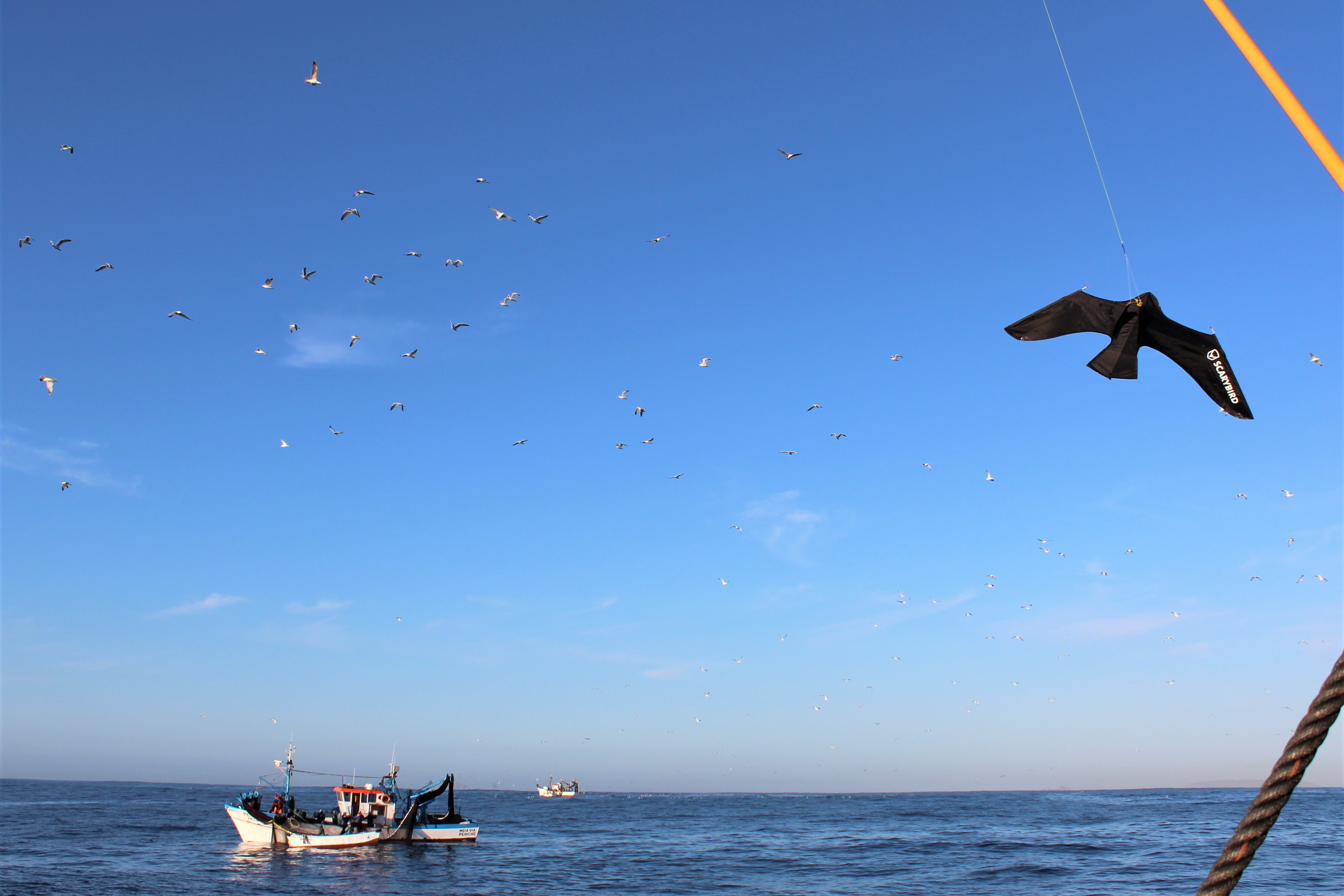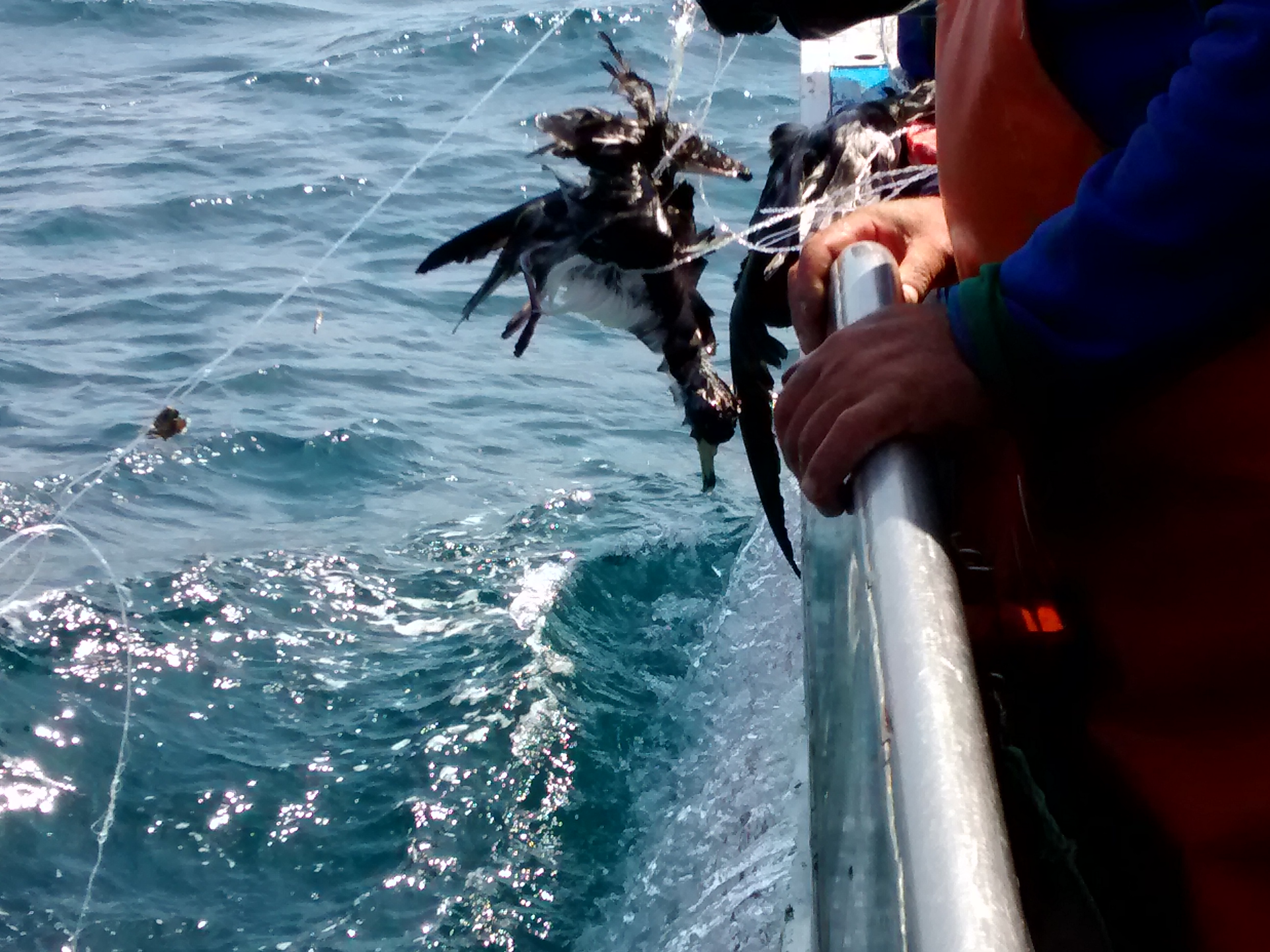
The bird-scaring kite deployed, photograph by Emanuel Constantino
Nuno Oliveira (Sociedade Portuguesa para o Estudo das Aves – SPEA, Lisbon, Portugal) and colleagues have published in the journal Bird Conservation International showing that a "raptor-like" bird-scaring kite reduced the chances of seabird bycatch by purse seiners.
The paper’s abstract follows:
“Bycatch is one of the main threats to marine biodiversity, affecting ocean ecosystems at a worldwide scale. The main focus of bycatch studies has been on the impact of larger vessels, with few studies assessing the impact of artisanal fisheries. Moreover, bycatch studies are often limited to a small number of marine regions, and significant gaps still exist in our knowledge of the spatial and temporal patterns of seabird bycatch. Here we present a multi-approach method to accurately quantify seabird bycatch driven by small- and medium-sized fishing fleets operating in a high priority area for seabird conservation on the Portuguese mainland. Results of three mitigation measures to reduce seabird bycatch on fishing gear where seabird bycatch is most likely to occur were also tested: high contrast panels in bottom gillnets, black hooks in demersal longlines and a bird scaring device in purse seines. The efficacy, acceptance, and economic viability were tested for each mitigation measure. Sixty-seven individuals of seven seabird species were bycaught during 295 monitored fishing trips between 2015 and 2018. Bycatch occurred mainly in demersal longlines (0.07 birds fishing event-1), followed by purse seines (0.02 birds fishing event-1) and bottom gillnets (0.01 birds fishing event-1). Nevertheless, the bird scaring device caused birds to interact less with the vessel (the presence of gulls was reduced by 11%), thus decreasing the likelihood of bycatch. This device has proved to be low-cost (representing less than 5% income of a single day’s landings) and easy to implement, being also well accepted by purse seine fishermen. It was not possible to evaluate the efficacy of high contrast panels and black hooks, as no bycatch events were recorded during trials.”

A drowned Cory's Shearwater Calonectris borealis comes aboard on a Portuguese longline, photograph by Iván Gutiérrez
Read a related post here.
With thanks to Nuno Oliveira.
Reference:
Oliveira, N., Almeida, A., Alonso, H., Constantino, E., Ferreira, A., Gutiérrez, I., Santos, A., Silva, E. & Andrade, J. 2020. A contribution to reducing bycatch in a high priority area for seabird conservation in Portugal. Bird Conservation International, 1-20. doi:10.1017/S0959270920000489.
John Cooper, ACAP Information Officer, 29 September 2020

 English
English  Français
Français  Español
Español